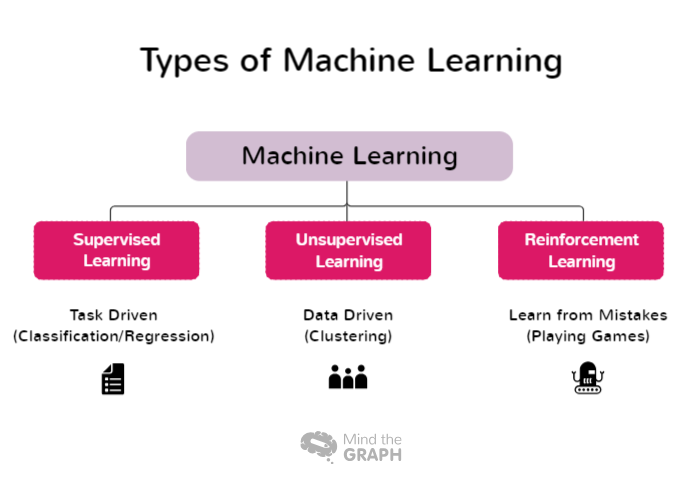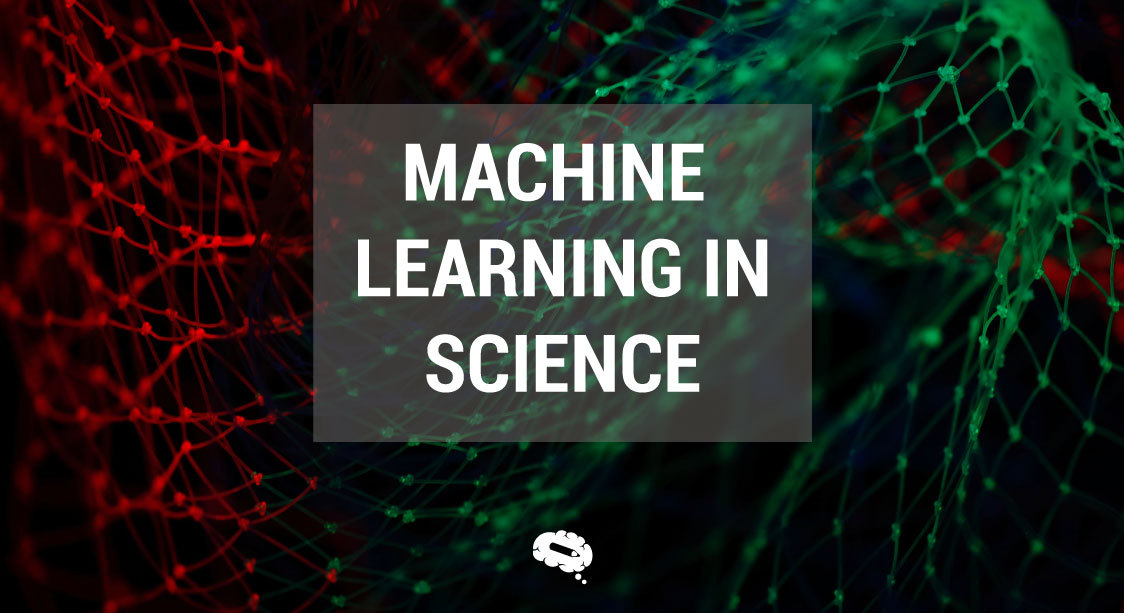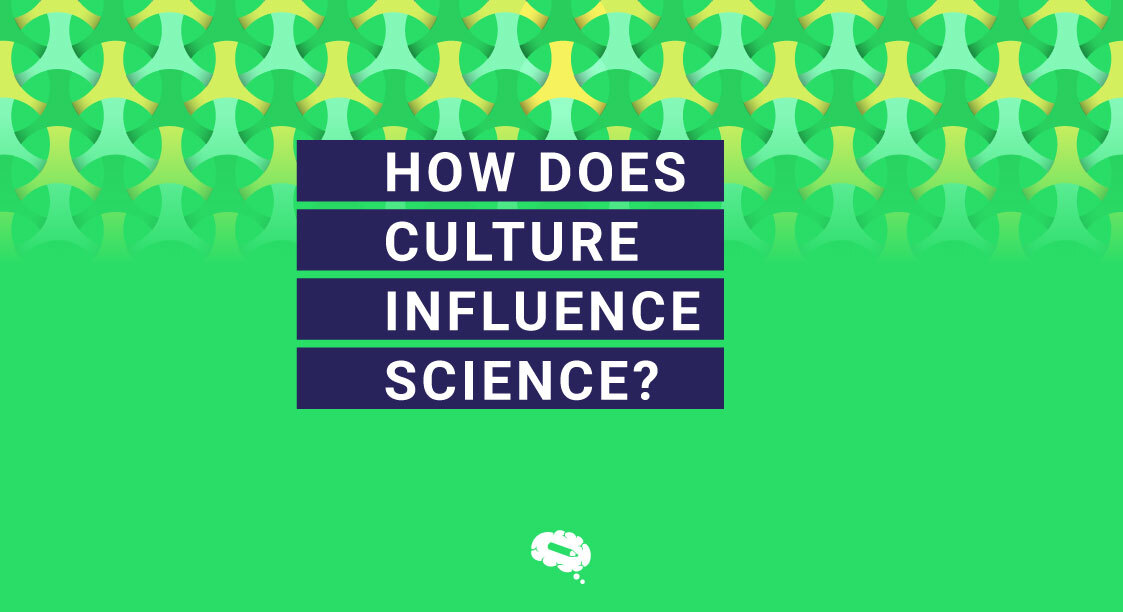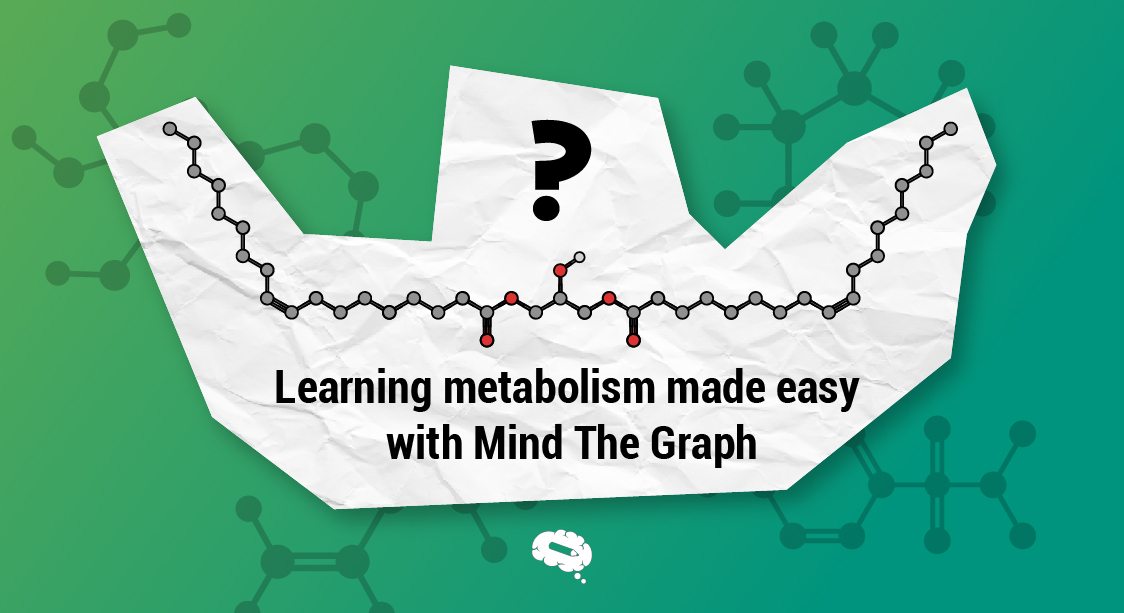In recent years, machine learning has emerged as a powerful tool in the field of science, revolutionizing the way researchers explore and analyze complex data. With its ability to automatically learn patterns, make predictions, and uncover hidden insights, machine learning has opened up new avenues for scientific inquiry. This article has the objective to highlight the crucial role of machine learning in science by exploring its wide range of applications, the advancements made in this field, and the potential it holds for further discoveries. Understanding the operation of machine learning, scientists are pushing the boundaries of knowledge, unraveling intricate phenomena, and paving the way for groundbreaking innovations.
What Is Machine Learning?
Machine Learning is a branch of Artificial Intelligence (AI) that focuses on developing algorithms and models that enable computers to learn from data and make predictions or decisions without being explicitly programmed. It involves the study of statistical and computational techniques that allow computers to automatically analyze and interpret patterns, relationships, and dependencies within data, leading to the extraction of valuable insights and knowledge.
Related article: Artificial Intelligence In Science
Machine Learning in Science
Machine Learning has emerged as a powerful tool in various scientific disciplines, revolutionizing the way researchers analyze and interpret complex data sets. In science, Machine Learning techniques are employed to tackle diverse challenges, such as predicting protein structures, classifying astronomical objects, modeling climate patterns, and identifying patterns in genetic data. Scientists can train Machine Learning algorithms to uncover hidden patterns, make accurate predictions, and gain a deeper understanding of complex phenomena, by utilizing large volumes of data. Machine Learning in science not only enhances the efficiency and accuracy of data analysis but also opens up new ways for discovery, enabling researchers to address complex scientific questions and accelerate advancements in their respective fields.
Types Of Machine Learning
Some types of Machine Learning cover a wide range of approaches and techniques, each suited to different problem domains and data characteristics. Researchers and practitioners can choose the most appropriate approach for their specific tasks and leverage the power of Machine Learning to extract insights and make informed decisions. Here are some of the types of Machine Learning:

Supervised Learning
Supervised learning is a fundamental approach in machine learning where the model is trained using labeled datasets. In this context, labeled data refers to input data that is paired with corresponding output or target labels. The goal of supervised learning is to enable the model to learn patterns and relationships between the input features and their corresponding labels, allowing it to make accurate predictions or classifications on new, unseen data.
During the training process, the model iteratively adjusts its parameters based on the provided labeled data, striving to minimize the difference between its predicted outputs and the true labels. This enables the model to generalize and make accurate predictions on unseen data. Supervised learning is widely used in various applications, including image recognition, speech recognition, natural language processing, and predictive analytics.
Unsupervised Learning
Unsupervised learning is a branch of machine learning that focuses on analyzing and clustering unlabeled datasets without the use of predefined target labels. In unsupervised learning, algorithms are designed to automatically detect patterns, similarities, and differences within the data. By uncovering these hidden structures, unsupervised learning enables researchers and organizations to gain valuable insights and make data-driven decisions.
This approach is particularly useful in exploratory data analysis, where the objective is to understand the underlying structure of the data and identify potential patterns or relationships. Unsupervised learning also finds applications in various domains such as customer segmentation, anomaly detection, recommendation systems, and image recognition.
Reinforcement Learning
Reinforcement learning (RL) is a branch of machine learning that focuses on how intelligent agents can learn to make optimal decisions in an environment to maximize cumulative rewards. Unlike supervised learning which relies on labeled input/output pairs or unsupervised learning which seeks to discover hidden patterns, reinforcement learning operates by learning from interactions with the environment. The intention is to find a balance between exploration, where the agent discovers new strategies, and exploitation, where the agent leverages its current knowledge to make informed decisions.
In reinforcement learning, the environment is typically described as a Markov decision process (MDP), which allows for the use of dynamic programming techniques. Unlike classical dynamic programming methods, RL algorithms do not require an exact mathematical model of the MDP and are designed to handle large-scale problems where exact methods are impractical. By applying reinforcement learning techniques, agents can adapt and improve their decision-making abilities over time, making it a powerful approach for tasks such as autonomous navigation, robotics, game playing, and resource management.
Machine Learning Algorithms And Techniques
Machine learning algorithms and techniques offer diverse capabilities and are applied in various domains to solve complex problems. Each algorithm has its own strengths and weaknesses, and understanding their characteristics can help researchers and practitioners choose the most suitable approach for their specific tasks. By leveraging these algorithms, scientists can unlock valuable insights from data and make informed decisions in their respective fields.
Random Forests
Random Forests is a popular algorithm in machine learning that falls under the category of ensemble learning. It combines multiple decision trees to make predictions or classify data. Each decision tree in the random forest is trained on a different subset of the data, and the final prediction is determined by aggregating the predictions of all the individual trees. Random Forests are known for their ability to handle complex datasets, provide accurate predictions, and handle missing values. They are widely used in various fields, including finance, healthcare, and image recognition.
Deep Learning Algorithm
Deep Learning is a subset of machine learning that focuses on training artificial neural networks with multiple layers to learn representations of data. Deep learning algorithms, such as Convolutional Neural Networks (CNNs) and Recurrent Neural Networks (RNNs), have achieved remarkable success in tasks such as image and speech recognition, natural language processing, and recommendation systems. Deep learning algorithms can automatically learn hierarchical features from raw data, enabling them to capture intricate patterns and make highly accurate predictions. However, deep learning algorithms require large amounts of labeled data and substantial computational resources for training. To learn more about deep learning, access the IBM website.
Gaussian Processes
Gaussian Processes are a powerful technique used in machine learning for modeling and making predictions based on probability distributions. They are particularly useful when dealing with small, noisy datasets. Gaussian Processes provide a flexible and non-parametric approach that can model complex relationships between variables without making strong assumptions about the underlying data distribution. They are commonly used in regression problems, where the objective is to estimate a continuous output based on input features. Gaussian Processes have applications in fields such as geostatistics, finance, and optimization.
Application Of Machine Learning In Science
The application of machine learning in science opens up new avenues for research, enabling scientists to tackle complex problems, uncover patterns, and make predictions based on large and diverse datasets. By harnessing the power of machine learning, scientists can gain deeper insights, accelerate scientific discovery, and advance knowledge across various scientific domains.
Medical Imaging
Machine learning has made significant contributions to medical imaging, revolutionizing diagnostic and prognostic capabilities. Machine learning algorithms can analyze medical images such as X-rays, MRIs, and CT scans to aid in the detection and diagnosis of various diseases and conditions. They can assist in identifying anomalies, segmenting organs or tissues, and predicting patient outcomes. By leveraging machine learning in medical imaging, healthcare professionals can enhance the accuracy and efficiency of their diagnoses, leading to better patient care and treatment planning.
Active Learning
Active learning is a machine learning technique that enables the algorithm to interactively query a human or an oracle for labeled data. In scientific research, active learning can be valuable when working with limited labeled datasets or when the annotation process is time-consuming or expensive. By intelligently selecting the most informative instances for labeling, active learning algorithms can achieve high accuracy with fewer labeled examples, reducing the burden of manual annotation and accelerating scientific discovery.
Scientific Applications
Machine learning finds widespread applications in various scientific disciplines. In genomics, machine learning algorithms can analyze DNA and RNA sequences to identify genetic variations, predict protein structures, and understand gene functions. In materials science, machine learning is employed to design new materials with desired properties, accelerate materials discovery, and optimize manufacturing processes. Machine learning techniques are also used in environmental science for predicting and monitoring pollution levels, weather forecasting, and analyzing climate data. Moreover, it plays a crucial role in physics, chemistry, astronomy, and many other scientific fields by enabling data-driven modeling, simulation, and analysis.
Benefits Of Machine Learning in Science
The benefits of machine learning in science are numerous and impactful. Here are some key advantages:
Enhanced Predictive Modeling: Machine learning algorithms can analyze large and complex datasets to identify patterns, trends, and relationships that may not be easily recognizable through traditional statistical methods. This enables scientists to develop accurate predictive models for various scientific phenomena and outcomes, leading to more precise predictions and improved decision-making.
Increased Efficiency and Automation: Machine learning techniques automate repetitive and time-consuming tasks, allowing scientists to focus their efforts on more complex and creative aspects of research. Machine learning algorithms can handle vast amounts of data, perform rapid analysis, and generate insights and conclusions efficiently. This leads to increased productivity and accelerates the pace of scientific discovery.
Improved Data Analysis and Interpretation: Machine learning algorithms excel at data analysis, enabling scientists to extract valuable insights from large and heterogeneous datasets. They can identify hidden patterns, correlations, and anomalies that may not be immediately apparent to human researchers. Machine learning techniques also aid in data interpretation by providing explanations, visualizations, and summaries, facilitating a deeper understanding of complex scientific phenomena.
Facilitated Decision Support: Machine learning models can serve as decision-support tools for scientists. By analyzing historical data and real-time information, machine learning algorithms can assist in decision-making processes, such as selecting the most promising research avenues, optimizing experimental parameters, or identifying potential risks or challenges in scientific projects. This helps scientists make informed decisions and increases the chances of achieving successful outcomes.
Accelerated Scientific Discovery: Machine learning accelerates scientific discovery by enabling researchers to explore vast amounts of data, generate hypotheses, and validate theories more efficiently. By leveraging machine learning algorithms, scientists can make new connections, uncover novel insights, and identify research directions that may have otherwise been overlooked. This leads to breakthroughs in various scientific fields and promotes innovation.
Communicate Science Visually With The Power Of The Best And Free Infographic Maker
Mind the Graph platform is a valuable resource that aids scientists in effectively communicating their research visually. With the power of the best and free infographic maker, this platform enables scientists to create engaging and informative infographics that visually depict complex scientific concepts and data. Whether it’s presenting research findings, explaining scientific processes, or visualizing data trends, the Mind the Graph platform provides scientists with the means to visually communicate their science clearly and compellingly. Sign up for free and start creating a design now.

Subscribe to our newsletter
Exclusive high quality content about effective visual
communication in science.





